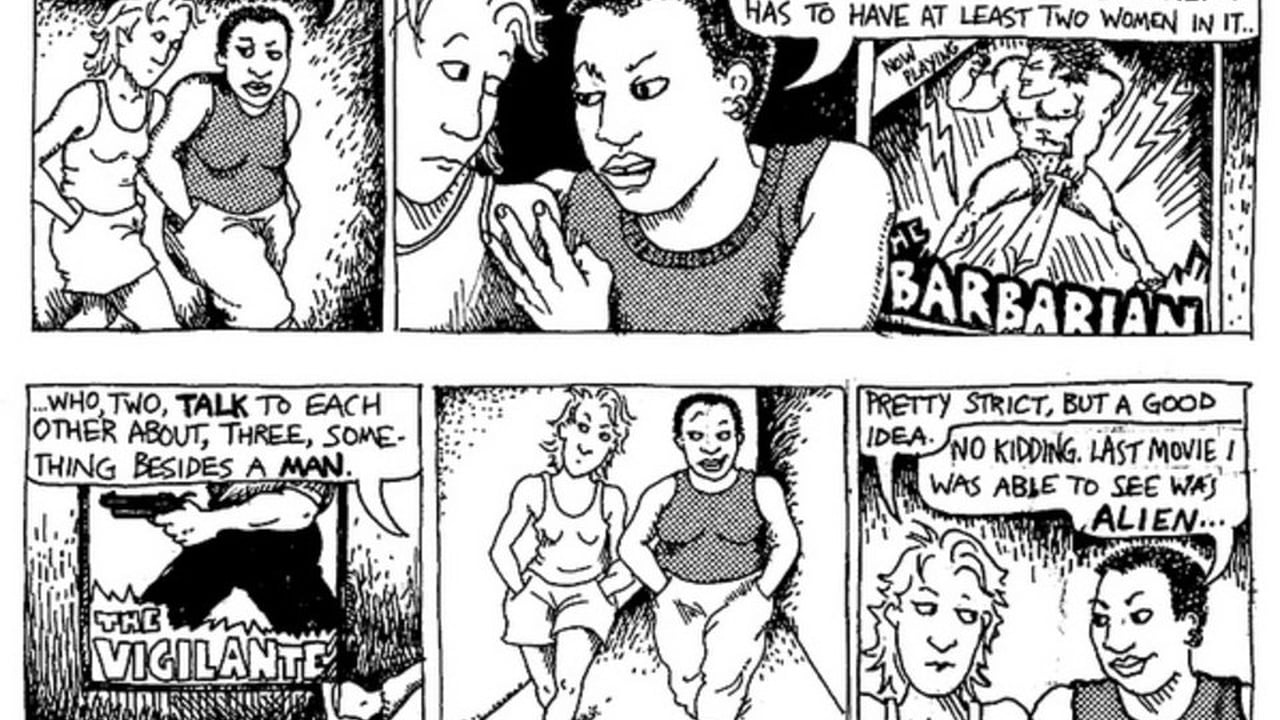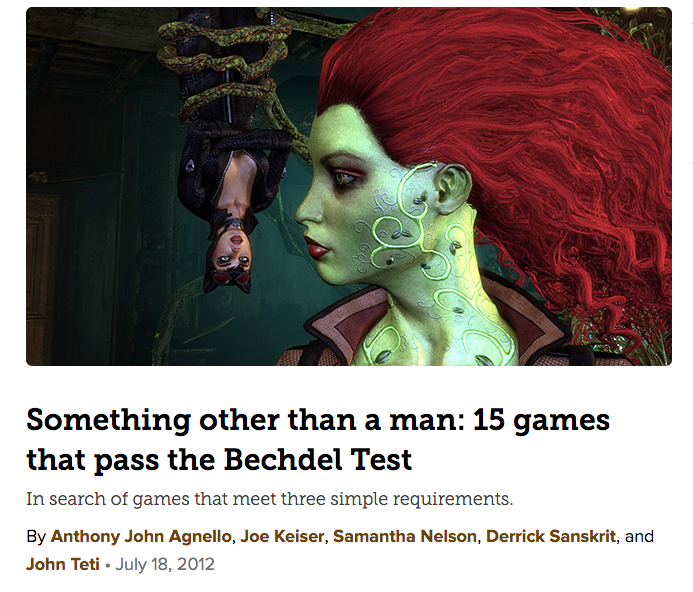Sweden is looking to change the way we look at video games through the Bechdel test.
In 1985, the Bechdel test was incidentally created by a popular comic strip called Dykes to Watch Out For by Alison Bechdel. She had originally intended the comic to poke fun at what kind of movies became popular. She had not intended for the idea to grow.
Shortly after the strip was published, Sweden began an official rating system based on the comic in order to test their movies. Back in 2014, Sweden also determined that it would try to adapt this system to rate video games as well.
How does the test work?
The Bechdel test is a pass/fail system comprised of three simple questions, the same questions in the comic. The chosen movie is then compared to these questions. The questions are:
- Does the movie include two female characters?
- Do the female characters have a conversation?
- Is their conversation about something other than a man?
In 2014, it was brought to the attention of the Swedish government by Dataspelsbranschen, a large game developer, that this would be a relevant game rating system to use. They argued that it would affect players as well as the gaming industry, which, at the time, consisted of only 16% female employees.
One of the major questions regarding the test is, how will the three questions work for video games? In an article by Helen Lewis titled, “Do video games need their own version of the Bechdel test?” Lewis went to Twitter and found ways the Bechdel test could be updated for video games. Some suggested playable characters that passed the test must be: a female character that the main character could interact with; she would be a character that would not need rescuing nor be a prostitute; she would not be overly sexualized (wearing a proper shirt and pants perhaps); and she should be important enough to the game to be featured in their ads.
Others have gone on to consider how to account for different species. Also, since recorded gameplay for the average video game is so much longer than a two-hour film, the female character should be required to speak or interact in much longer portions of the game. It would be expected for the female to require much more than one or two sentences of speech in order to pass the test.
Two years have gone by since the Swedish government provided Dataspelsbranschen with funds to study and implement this pass/fail system in their video games. Sadly, I have not found any news pieces, interviews, or solid evidence of its official use…yet. Given the vast diversity of content incorporated within game-play, it is understandable that no official version for the test has been developed.
This does not mean that gamers, who caught wind of this potential new system, have not already started rating these games for themselves.
The Gameologcal Society, Bechdel Gamer, zeldablue of NeoGaf, and Rii of Rock Paper Shotgun, are just a few examples among the body of gamers who take it upon themselves to use the Bechdel system to rate the games available to them.
This isn’t to say that everyone is a fan of the test’s potential prospects.
Robbie Collin, a chief film critic who wrote about the test in 2013, determined it was useless since it just gave an excuse to draw up points the public wants to hear versus immediately beginning to address them. He wrote this after comparing the last 5 movies he himself had watched to the test, and finding that of those that passed (2) they produced very bland and stereotypical roles for women. He stated:
I suspect that many critics and bloggers are happy to overlook the test’s flaws because the conclusion it seems to lead us to is one that they want to hear: cinema is perilously lacking in well-drawn female characters. Well, if that’s true – and it obviously is – can’t we just forget about the test and talk about that?
Others argue that the test serves as a way to easily bring these topics around and that the test is there to serve as insight. This test does not stop movies from being run but simply helps point out that there are a lack of strong, prominent, convincing, intelligent or active female roles in films. In general, the bloggers who take on the reviewing of these films simply seek to know how hard it is to address three, simple, everyday style questions.
This test has not been designated to be the only rating system for films or video games, it just serves as an additional reference. Either way, it does serve an important purpose in determining how we favor certain character types/genders in relation to entertainment technologies. I find that the three questions are not too much to ask (for now) when looking for a good film or game. Perhaps we would even enjoy games with more prominent female characters more than others if we simply incorporated them more. I find this test to be an appropriate form of bringing attention to this topic, and it doesn’t look to be doing any harm to compare what we play to these questions.
Try it for yourself. What games or movies have you seen/played lately, and how do they compare to the test? Or, what would you suggest the test needs to address in order to be used for video games? – Comment!
P.S. To check out the Bechdel Test movie list, click here!










Published: Apr 2, 2016 03:27 pm